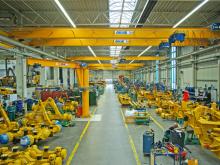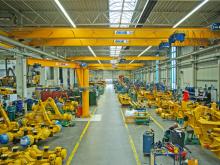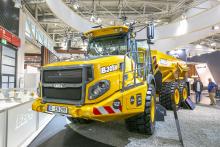
The new production complex, which received a grant from local state development agency LEG Thuringen, manufactures articulated dump truck (ADT) components for the Northern Hemisphere. With around 12 000m² of floor space, the new facility triples the available space at the Eisenach-Kindel site.
Bell Equipment Group CEO Leon Goosen officially opened the new production complex at the end of September and said the occasion was a progression of the group’s sustainable growth strategy to bring the Bell ADT range closer to its customer in the major global markets.
The strategy first gained traction in 2003 when Bell opened its ADT assembly plant in Eisenach-Kindel in response to growing activity in Europe. Goosen said that it was the “rich history in vehicle production, the location relative to infrastructure, along with investment support by the Ministry for Economic Affairs and the LEG Thüringen” that first attracted Bell to Germany’s Thüringen region in the early 2000s.
Bell says that strong demand from Europe and North America led to the expansion of its European logistics centre in Germany in 2017 and the establishment of an American logistics centre the following year.
“This, our third project here, is a significant capital investment for the Bell Equipment Group and completing the project in just over 12 months is a tremendous achievement that demonstrates our commitment to grow as a global manufacturer,” Goosen said. “The investment is a direct response to the widespread acceptance and growth in demand of our Bell Articulated Dump Truck range. Trucks built in this factory are destined primarily for our Northern Hemisphere markets of Europe, the UK and a significant proportion of production is exported to North America and Canada.”
The new facility directly adjoins the existing factory halls and provides in-house manufacturing of truck components in Europe for all seven Bell ADT models (B20E to B50E) that are assembled in Germany.
Goosen said that European production will improve the group’s lead times, providing greater flexibility and better response to dealers and customers. He added that efficiency in freight and working capital costs will also be achieved by eliminating the shipping of raw material from Europe to South Africa and them shipping the bulky components back to the Northern Hemisphere for consumption in those markets. More than 3 000 tonnes of steel will be consumed annually to satisfy the demand from those markets that are served from the plant.









